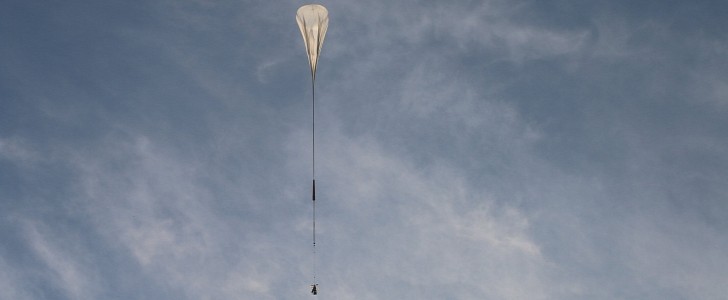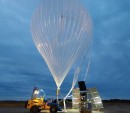A helium-filled balloon as big as a football stadium could help astronomers get high-resolution images rivaling those of the Hubble Space Telescope. Not only that, but it will also cost much less than its 30-year-old counterpart, which is currently circling Earth.
It's called SuperBIT, which is short for Superpressure Balloon-borne Imaging Telescope, and it's a project developed by Durham, Toronto, and Princeton Universities together with NASA and the Canadian Space Agency (CSA).
A balloon with a volume of 532,000 cubic meters can lift SuperBIT, which has a half-meter-wide (1.64-foot) mirror, 25 miles (40 kilometers) up in the sky. It will fly in the Earth's stratosphere, and the team of researchers hopes that it will help them obtain high-resolution multicolor optical and ultraviolet observations.
In 2019, during its final test flight, the telescope demonstrated really good stability. This should allow the telescope to take images just as sharp as the ones provided by Hubble.
Unlike other balloons that can stay up for just a few days, this one will be built with NASA's recent development, which makes use of 'superpressure.' This method allows for helium to remain inside the balloon for several months.
It will circle Earth several times, carried by stable winds, taking images of the galaxies at night, and during the day, it will use solar panels to recharge its batteries.
SuperBIT will be almost 1000 times less expensive than a similar satellite, with construction and operation expected to cost $5 million. Because of its low cost, the scientists predict that it is possible to have an entire fleet of space telescopes carried by giant balloons.
"New balloon technology makes visiting space cheap, easy, and environmentally friendly," says Mohamed Shaaban, a Ph.D. student at the University of Toronto.
"SuperBIT can be continually reconfigured and upgraded, but its first mission will watch the largest particle accelerators in the Universe: collisions between clusters of galaxies.", he added.
SuperBIT is scheduled to launch from New Zealand in April next year. Its scientific goal will be to measure the properties of dark matter particles using a technique known as gravitational lensing, which occurs when a cluster of galaxies forms a gravitational field that distorts and magnifies light from distant galaxies in the same line of sight.
On Wednesday, July 21st, Shaaban will hold a presentation on SuperBIT at the Royal Astronomical Society's annual National Astronomy Meeting. In a recently released video by the Royal Astronomical Society, you can see the balloon in action, taking off from NASA's Columbia Scientific Balloon Facility on SuperBIT's second test flight.
A balloon with a volume of 532,000 cubic meters can lift SuperBIT, which has a half-meter-wide (1.64-foot) mirror, 25 miles (40 kilometers) up in the sky. It will fly in the Earth's stratosphere, and the team of researchers hopes that it will help them obtain high-resolution multicolor optical and ultraviolet observations.
In 2019, during its final test flight, the telescope demonstrated really good stability. This should allow the telescope to take images just as sharp as the ones provided by Hubble.
Unlike other balloons that can stay up for just a few days, this one will be built with NASA's recent development, which makes use of 'superpressure.' This method allows for helium to remain inside the balloon for several months.
It will circle Earth several times, carried by stable winds, taking images of the galaxies at night, and during the day, it will use solar panels to recharge its batteries.
SuperBIT will be almost 1000 times less expensive than a similar satellite, with construction and operation expected to cost $5 million. Because of its low cost, the scientists predict that it is possible to have an entire fleet of space telescopes carried by giant balloons.
"New balloon technology makes visiting space cheap, easy, and environmentally friendly," says Mohamed Shaaban, a Ph.D. student at the University of Toronto.
"SuperBIT can be continually reconfigured and upgraded, but its first mission will watch the largest particle accelerators in the Universe: collisions between clusters of galaxies.", he added.
SuperBIT is scheduled to launch from New Zealand in April next year. Its scientific goal will be to measure the properties of dark matter particles using a technique known as gravitational lensing, which occurs when a cluster of galaxies forms a gravitational field that distorts and magnifies light from distant galaxies in the same line of sight.
On Wednesday, July 21st, Shaaban will hold a presentation on SuperBIT at the Royal Astronomical Society's annual National Astronomy Meeting. In a recently released video by the Royal Astronomical Society, you can see the balloon in action, taking off from NASA's Columbia Scientific Balloon Facility on SuperBIT's second test flight.







